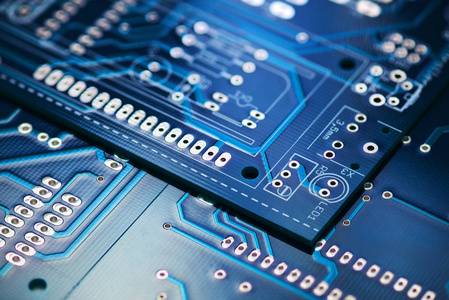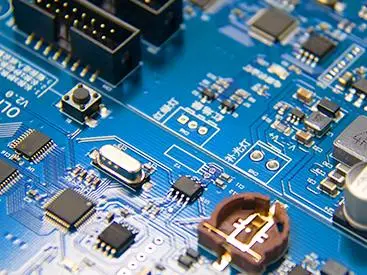
Exploration on the Assembly Process of Industrialized PCBA for R&D Enterprises
Based on years of PCBA assembly production technology management experience, aiming at designers of R&D enterprises, we will popularize the basIC knowLEDge of SMT process and talk about the industrialization of system boards of R&D enterprises. The MARKet trend has shown that mobile phones have been divided into 80% shares by several giants such as Apple, Xiaomi and Huawei. Therefore, many original SMT processing enterprises have begun to transform into various other demand processing boards, However, the characteristics of this kind of demand are destined to be customized system type boards, which is essentially different from the original production of mobile phone motherboards. The mobile phone requires intensive production in large quantities, and the process determines that only the SMT process is required to complete the assembly, while the research type boards are produced in SMAll batches and decentralized. In addition to the SMT process, THT or even manual welding, crimping, gluing and coating are also required for the later stage, which is more complex.
To sum up, the key process lies in: SMT -- THT/manual welding -- testing -- three proofing paint, among which SMT process of typical R&D type factories with the highest technical content is mainly introduced:
1、 Material issue: intelligent warehouse management system scheme
The intelligent warehouse management system will adopt the combination of electronic intelligent manufacturing management and the modernization of warehouse management information. Based on lean production (JIT) theory, the intelligent warehouse management system will integrate with external systems through database technology, image recognition technology, barcode technology, electronic shelf lighting technology, API technology (application program interface), OLAP technology (online transaction processing) and corresponding communication mechanisms, Effectively manage warehouse process and operation information.
Technical features:
1. PO receiving without barcode: take the initiative to obtain PO information from ERP, receive materials automatically (automatically identified by the CAMera)/manually through AOS, check the information related to materials and PO, and the system will generate Reel ID and print material labels after the verification.
2. PO receiving with barcode: supports the import of UPN information. Scan UPN information and check the information related to materials and delivery notes.
3. IQC inspection: connect with LCR and other inspection equipment, generate an inspection report after inspection, and the inspection results will be automatically communicated to ERP. After the inspection, the batch to be received and the batch to be returned are automatically generated according to the inspection results.
4. Warehousing of raw material warehouse: select the corresponding batch list to be warehoused, scan the reed id, and complete warehousing according to the recommended rules (warehouse location/electronic shelf location). After warehousing, you can perform additional printing (Bluetooth printing, network printing), splitting, merging, counting, and storage adjustment (single material and whole storage location operations are supported). At the same time, the warehouse shall be subject to early warning management (stock age, overdue, dead materials, etc.).
5. Transfer management: according to the system transfer order, use PDA to select the transfer order number, and transfer materials from the raw material warehouse to the corresponding area (line side warehouse, workshop, etc.); The system automatically lights up according to the FIFO principle, and the warehouse staff issues materials according to the visual light up rEMInder (multiple work orders are supported).

6. Miscellaneous Receipt/Issue: miscellaneous receipt/issue is performed for lending (samples, repairs, tests, etc.) for special reasons. The electronic shelf lights up to prompt material issuing according to the rules. When the material is returned, the remaining quantity is updated and received.
7. Line side warehouse warehousing: select the corresponding batch list to be warehoused, scan the reed id, and complete warehousing according to the recommended rules (warehouse location/electronic shelf location). After warehousing, you can perform additional printing (Bluetooth printing, network printing), splitting, merging, counting, and storage transfer (supporting single material and whole storage location operations).
8. Issue from the line side warehouse: the system generates a material preparation alert for the first set of materials under the work order in advance (the time can be freely configured) according to the planned start time of the work order. Use the PDA to select the work order number, issue the work order LPM according to the electronic shelf issuing reminder (support the combination of front and back issuing), support the electronic shelf vehicle issuing, support the sorting of issuing according to the station table and the sub inventory reminder.
9. Material return: cooperate with the automatic counting machine to complete the material return operation.
10. Return: return by PO or by account alias.
11. Count: cycle count, periodic count, user-defined count.
12. LPM (low level early warning) material issuing: WMS system will issue materials through the interface with MES system (provided that MES must provide the interface)
The docking generates a low level Kanban alert. Use the PDA to select the WO number, and then LPM Material Issuance can be performed.
13. Special material management: special process control for solder paste and humidity sensitive parts.
14. Scrapping: scrap application, scrap identification, entering scrap warehouse, and disposal by renewable resource manufacturers for scrap products
technological process.
15. Special operation: realize the logistics conveyor belt, and automatically carry out the code scanning and material deduction operation.
16. Permission Management: separate warehouse permission control is available. Warehouse operations cannot be performed by personnel other than the warehouse.
17. ERP interface: warehouse information automatically interacts with ERP, and you can set whether to update ERP inventory.
2、 Base plate marking: laser engraving
As a modern precision processing method, laser marking technology has incomparable advantages compared with traditional processing methods such as manual labeling, ink-jet printing, and so on:
1. Using laser as processing means, there is no processing force between the PCB and the marking part, and it has the advantage of non-contact, ensuring the invisible change and damage of PCB or components. At the same time, it has a wide adaptability to materials, and can make very fine marks on the surface of a variety of materials with very good durability.
2. Laser has good space and time control. It has great freedom in the material, shape, size and processing environment of the marking object. It is especially suitable for automatic marking and special surface marking. And the processing method is flexible, which can not only meet the needs of laboratory type single design, but also meet the requirements of industrial mass production.
3. Laser marking fine lines can reach the order of millimeter to micrometer. It is very difficult to copy and change the marks made by laser marking technology, which is extremely important for product anti-counterfeiting.
4. The combination of laser processing system and FA industrial control technology can form an efficient automatic processing equipment, which can print various characters, symbols and patterns. It is easy to use software to design marking patterns, change marking content, and adapt to the requirements of modern production efficiency and fast pace.
5. Compared with traditional labeling/ink-jet printing, laser processing has no pollution sources/consumables, and is a clean and pollution-free high environmental processing technology.
3、 SMT process: printing - SPI detection - patch - reflow - AOI detection
SMT is the abbreviation of Surface Mount Technology, which means surface mount technology in Chinese. SMT is a new generation of electronic assembly technology and the most popular technology and process in the electronic assembly industry. With high assembly density, small size and light weight of electronic products, the volume and weight of SMT components are only about 1/10 of those of traditional plug-in components. After SMT is generally used, the volume of electronic products is reduced by 40%~60%, and the weight is reduced by 60%~80%. SMT products have high reliability and strong anti vibration capability; The solder joint has low defect rate and good high-frequency characteristics; Reduce electromagnetic and radio frequency interference. It is easy to realize automation and improve production efficiency. Reduce the cost by 30%~50%. Save materials, energy, equipment, manpower, time, etc. The main reasons for adopting SMT technology are as follows: electronic products pursue miniaturization, and the previously used perforated plug-in components cannot be reduced; The functions of electronic products are more complete, and the integrated circuits (ICs) used are no longer equipped with perforated components, especially large-scale and highly integrated ICs, so surface mounted components have to be used; With the mass production and automation of production, the factory should produce high-quality products with low cost and high output to meet customer needs and strengthen market competitiveness; The development of electronIC components, the development of integrated circuits (ICs), and the multiple applications of semiconductor materials.
Circuit board manufacturers, circuit board designers and PCBA manufacturers will explain to you the exploration of industrial PCBA assembly process of R&D enterprises.
然后
联系
电话热线
13410863085Q Q

微信

- 邮箱












